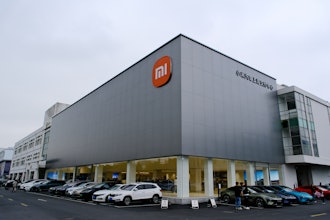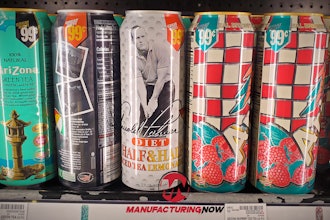Plastic reusable packaging is available in numerous configurations, and can be used in any part of the supply chain. |
Materials management is essential to better supply-chain performance. One way to improve the flow of product all along the supply chain is to use plastic reusable packaging. World-class companies like Ford, John Deere, Harley-Davidson, Tyson and others have already recognized the value of reusable packaging in moving their product faster, better, safer and more cost-effectively. A study conducted by Michigan State University, for example, noted that one U.S. automaker saved $10.9 million a year over a four-year period after a $16.3 million investment in reusable packaging. The savings included a 35% reduction in the cost of sending truckloads of waste to landfills. In the same study, another firm’s estimated savings from the use of reusable packaging was $2.3 million.
Plastic reusable packaging products are used to move, store and distribute product within a single operation or entire supply chain. They can also be used effectively in a managed open-loop system, with reverse logistics in place to return empty containers or pallets for re-use or replenishment.
Reusable packaging products include hand-held containers, bins, boxes or totes; pallets; divider sheets; bulk containers; storage containers; custom-designed packaging; and other products. Plastic reusable packaging is integrated in a single operation or entire supply chain to take the place of single-use corrugated shipping and storage boxes and limited-use wood pallets.
By design, most plastic reusable packaging products offer durable, rigid construction; contoured surfaces; easy-to-grasp handles; high levels of recyclability; and numerous options. These dimensionally consistent containers and pallets are easy to handle and interface effortlessly with all types of high-speed automated equipment. Some are specially designed to be hands-free, and solely handled by robots or conveyors. Plastic packaging has no nails or loose corrugated flaps that can halt a high-speed system. These products are available in standard sizes, so parts and materials can be packed/loaded to optimize the packaging, resulting in more product being manufactured and shipped in a shorter time.
Waste reduction
Plastic reusable packaging has been implemented at leading companies like General Motors and Ford specifically to reduce waste. Fewer SKUs of packaging are needed with standardized plastic reusable containers and pallets, they require less ordering and set-up time, and incur virtually no container disposal cost. The receipt and inspection of deliveries is faster and easier with standardized packages and consistent unit sizes. Corresponding indirect labor and equipment costs are driven from the system. Ford Motor Co. estimates, for example, that if an operator makes 1,500 parts per day and small-lot packaging saves 3 ft. of walking distance for each part, this equates to 54 hours per year or 1.35 man-weeks.
A more obvious source of waste is the costly disposal of used corrugated and wood packaging. The long service life of plastic reusable packaging allows it to be used over and over again. By establishing a reusable container and pallet program with its suppliers, General Motors reduced its disposal costs by $12 million between 1987 and 1992. Additionally, the automaker experienced reduced solid waste and product damage during shipping. At Ford, the use of 100% reusable containers for all production parts at one of its engine plants has eliminated the generation of 11 lbs. of expendable waste per engine produced or 30,000 lbs. per day.
Improved product flow
The contoured, lightweight design of standardized reusable packaging allows product to travel safely and efficiently to its destination and back. This improves the productive flow of product/material within a single operation and entire supply chain. In the 1990s, DaimlerChrysler sought to reduce inventory and packaging costs with reusable packaging. Its resulting small-lot containerization program rapidly yielded cost savings and improved supply-chain efficiency. For example, the automaker’s Belvidere, IL, assembly plant, experienced:
* a 60% reduction in assembly line inventory
* an annual reduction of 27% in parts handling
* an additional 1,700 sq. ft. of storage area.
In another example, a major truck manufacturer was able to reallocate 20,000 sq. ft. of production space by storing only a one-day supply of parts line-side rather than the larger quantity containers that previously came standard from its suppliers. The company provided suppliers with “right-sized” reusable containers designed to hold a half-day supply of each component.
Better inventory management
A fundamental concept of lean manufacturing is to source, build and move only what is needed, when it is needed. Shipping in smaller quantities, on a more frequent basis, and delivering parts closer to the time of usage reduces the number of days of parts inventory and therefore limits the days that inventory is nonproductive. Combining supplier pick-ups or customer deliveries into small, daily truck routes (milk runs) also reduces dollars tied up in inventory. Standardized plastic containers and pallets will securely stack higher than expendable boxes and nest or collapse to take up less floor space, making inventory management and material handling easier.
Ford Motor Co. has identified parts and material inventories as an opportunity to generate savings. A series of precisely scheduled sweeps were designed for each shift of operation, based on the analysis of time and place requirements for parts, load capacities and supplier locations. Small quantities of parts, enough for a few hours, are picked up from suppliers within specific windows several times a day and delivered to Ford, again, within specific 15-minute window times. In some cases the parts are first sent to the Sequencing Center so the right color floor mat, for example, reaches the line in time for placement in the right color vehicle.
Steps to implementation
A well-planned program for the use of plastic reusable packaging requires expertise and an in-depth understanding of the specific operation, the entire supply chain, and marketplace trends the company faces. Collaboration with an experienced reusable packaging provider will ease integration. Steps needed to introduce a successful program include the following:
Analysis. Begin the process with a careful analysis of the entire operation and supply chain to identify the product/material flow, the packaging application (work-in-process, storage, distribution, etc.) and packaging objectives (protection, improved transportation efficiencies, etc.).
Proof. Before a reusable packaging decision can be made, be able to demonstrate and prove how the packaging and related support services translate into measurable efficiencies. Potential return on investment can be calculated; metrics like time, cost reductions, safety, cleanliness and warehouse utilization should be documented for benchmarking.
Design. After discovering the specific needs of an operation, a comprehensive reusable packaging program is planned. The objective is to optimize the supply chain whenever and wherever possible.
Implementation. Once the reusable packaging program is planned, the specific packaging is delivered and integrated into the system. Leading packaging partners will typically oversee implementation to ensure long-term system success.
Evolution. Supply chain systems are dynamic and the packaging programs that support them must evolve with them. New product launches, quality improvements, changing production processes and labor practices may require more innovative packaging. Experienced packaging providers should be available to re-evaluate your future needs.
Acceptance, investment
Although it’s possible to physically implement reusable packaging in as little as five days, true success depends on stakeholders across the supply chain embracing the benefits. The biggest pitfall is lack of acceptance from people who are affected by the change. Packaging is one of the few areas that impact almost every function in an organization. All of those who touch the part or package should be represented and educated as part of implementation. Experienced packaging providers can usually provide on-site support to help plan and facilitate a smooth and most cost-efficient transition. In most organizations, this requires several months of planning, training and testing to ensure that all players embrace the new processes and work effectively with them.
The initial investment in plastic reusable packaging is different than the simple purchase of traditional packaging like corrugated boxes and wood pallets. A cost analysis conducted for a major tier-one automotive supplier, for example, cited that with a $448,000 initial investment, the company would experience a return on investment in under five months. Additionally, they would reduce line-side space requirements by 44% and eliminate 280 tons of waste. Similarly, when Check Printers, Inc., implemented 7,000 plastic containers at its Nashville, TN, headquarters operation, financial payback occurred within nine months. The company enjoyed a return on investment of more than 430% over a five-year service life. If initial investment is a concern, companies may be able to achieve immediate savings by leasing or pooling packaging. Operating leases are typically available in 36- or 48-month terms.
It is often beneficial to start a reusable packaging roll-out with a pilot program, then adjust the process and take the next step. By choosing to begin with a specific supplier, production line or delivery route, the organization can adjust operations gradually while still seizing the cost-savings opportunity. Moving step by step also gives employees a chance to adapt to the new process, and see visible signs of success.


















